11 Home Remedies For Scleroderma And Prevention Tips
Age, gender, genetics, and environmental factors can be held responsible here.
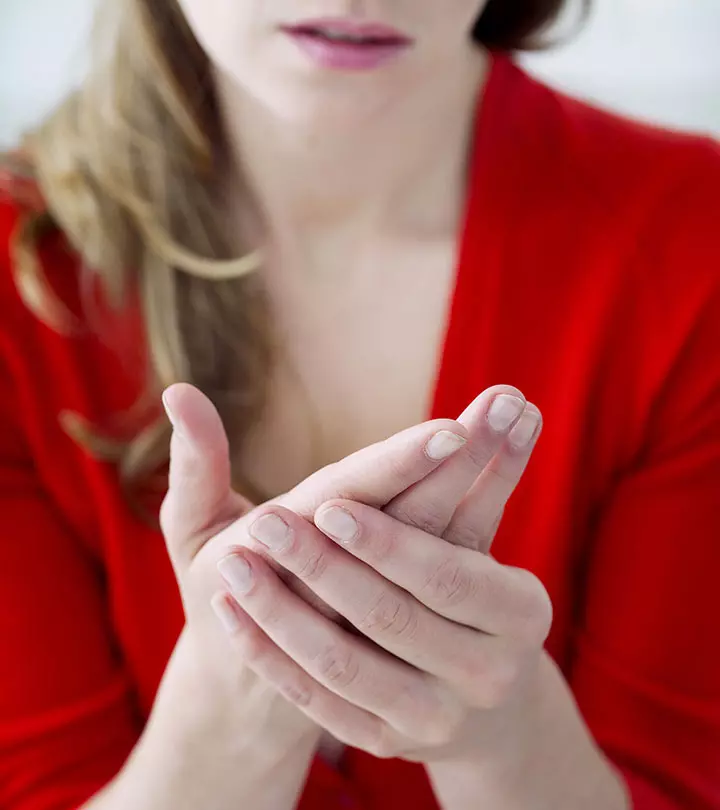
Image: Shutterstock
Scleroderma is a rare disease that affects the skin and connective tissues in your body. Commonly seen in women between 30 to 50 years of age, scleroderma affects 75,000 to 1,00,000 individuals in the US. While there are several types of scleroderma, scleroderma affects the skin the most. This disorder develops when your body overproduces collagen, a protein that keeps your connective tissues and bones together. Scleroderma may leave you with tight and thick skin and may also damage other organs in your body. While there is no cure for this condition, your doctor may recommend treatment options that will help keep the symptoms under control. In this article, we delve deeper into the symptoms, causes of scleroderma, and the treatment options available. Keep reading to know more!
In This Article
What Is Scleroderma?
Scleroderma refers to a range of autoimmune disorders that causes your skin and connective tissue to harden and tighten.
It is a chronic disease that tends to get worse as it progresses. Being an autoimmune disease, one of the markers of scleroderma is the presence of anti-nuclear antibodies, of which anti-topoisomerase antibodies, anti-RNA polymerase III antibodies, and anti-centromere antibodies are the most prominent ones, leading to immunological issues (1) .
Scleroderma is also referred to as crest syndrome and systemic sclerosis. It is considered to be a rheumatic disease.
 Did You Know?
Did You Know?Scleroderma occurs due to a problem with the immune system that causes increased collagen production. Collagen is a protein that holds the bones, muscles, tendons, and your skin together. Overproduction of collagen causes your tissues to scar and thicken. Scleroderma may be mild to potentially fatal in its severity.
Scleroderma is mainly classified into two types:
- Localized scleroderma
- Systemic scleroderma
Listed below are the scleroderma types along with the symptoms that surface with each type.
Key Takeaways
- The immune system attacks the healthy cells of the body leading to stiffness and puffiness in skin, blood vessels, and bones.
- People often feel fatigue, rapid weight loss, calcium deposits, red spots on skin, and difficulty in breathing.
- This disease can be detected with a blood test and skin biopsy, and medical treatments includes physical therapy, laser surgery, or immunosuppressants.
- Home remedies include essential oils, gotu kola, ginger, fish oil, and gram flour.
Symptoms And Types Of Scleroderma
- Localized Scleroderma
Localized scleroderma mainly affects the skin, although it may also impact your muscles and bones.
It is the mildest form of scleroderma and does not affect the internal organs. It is further divided into two types – morphea and linear scleroderma.
The symptoms of morphea scleroderma include light or dark patches on your skin that are oval-shaped.
Those with linear scleroderma may develop bands or streaks of hardened skin on the limbs. It usually affects the bones and muscles, causing joint pain.
People with localized scleroderma often face psychosocial challenges due to visible symptoms, such as changes in skin appearance. This may lead to issues with body image, social anxiety, and the need for emotional support.
- Systemic Scleroderma
Systemic scleroderma affects the entire body, including your blood and internal organs like your kidneys, esophagus, lungs, and heart. It is associated with fibrosis in multiple organs. Its two main types are limited cutaneous systemic sclerosis syndrome (CREST) and diffuse cutaneous systemic sclerosis. They are also known as limited scleroderma and diffuse scleroderma. Limited cutaneous systemic sclerosis syndrome (CREST) is the least severe type of the disease. It usually affects the skin on your hands, face, feet, and lower arms and legs. It is also termed CREST syndrome because its symptoms form the acronym, CREST, which stands for:
C – Calcinosis (formation of calcium deposits in tissues and under the skin)
R – Raynaud’s disease
E – Esophageal diseases like GERD
S – Sclerodactyly (formation of thick skin on the fingers)
T – Telangiectasia (enlargement of blood vessels that manifests as red spots)
Diffuse systemic sclerosis is characterized by the thickening of the skin of your hands up to your wrists. This can also affect your internal organs. Affected individuals often experience symptoms of weakness, fatigue, weight loss, and difficulty in breathing and swallowing.
Overall, the symptoms of scleroderma include:
- Stiffness, tightness, and puffiness of your fingers and hands due to emotional stress or sensitivity to cold
- Swelling in the feet
- Calcium deposition
- Narrowing of blood vessels in the hands and feet (Raynaud’s disease), which may cause digital ulcers.
- Problems with the esophagus
- Thickening of the skin on the fingers
- Formation of red spots on the face and hands
You may also face issues like skin inflammation under this condition. However, it is crucial to note that there could be various causes behind this issue. Hence, be sure about scleroderma to further proceed with its treatment.
A study conducted on 1021 patients found that 7.6% had progressive skin fibrosis with diffuse cutaneous systemic sclerosis. Also, more than 10% had a higher risk of experiencing a decline in lung function and dying from any cause compared to those without progressive skin fibrosis.
The exact cause of this condition is yet to be determined. But, since it is an autoimmune disease, problems with the functioning of your immune system could be the main cause. Other factors that can cause scleroderma or increase its risk are listed below.
Causes And Risk Factors

One of the main causes of scleroderma is believed to be the overproduction of collagen – a protein that forms the building block of connective tissues. This may lead to the thickening and subsequent scarring of the affected tissues.
Another factor that could be responsible for the development of scleroderma is genes. However, this isn’t confirmed yet.
A family history of autoimmune diseases is often traced in individuals with scleroderma, making it another factor that could be contributing to the development of the condition.
Other factors that can increase your risk of getting scleroderma are:
- Age – Those between 30 and 50 years of age are more likely to develop scleroderma.
- Gender – This disease is more common in women.
- Medical conditions like diabetes increase your risk of developing scleroderma.
- Exposure to environmental factors like silica dust and certain chemicals like vinyl chloride.
- Medications like carbidopa and bleomycin also increase your risk.
 Quick Tip
Quick TipScleroderma may also cause certain complications. Learn more about them below.
Complications Associated With Scleroderma
Scleroderma may lead to various complications like (2):
- Skin Issues: Thickening and tightening of the skin that often leads to limited mobility, ulcers, and difficulty in performing everyday tasks.
- Raynaud’s Phenomenon: Persistent spasms in small blood vessels, particularly in the fingers and toes, causing reduced blood flow, pain, and color changes.
- Digestive Problems: Esophageal dysfunction, acid reflux, and difficulty swallowing due to fibrosis in the gastrointestinal tract.
- Lung Issues: Pulmonary hypertension, interstitial lung disease, and breathing difficulties due to lung tissue scarring.
- Kidney Complications: High blood pressure, kidney damage, and renal crisis may lead to kidney failure.
- Heart Issues: Inflammation of the heart lining that may lead to pericarditis and an increased risk of heart disease.
- Joint And Muscle Pain: Joint inflammation and muscle weakness, reducing overall mobility and causing discomfort.
Scleroderma is quite difficult to diagnose as it surfaces gradually and in different forms. Hence, your doctor may carry out the following tests to diagnose it.
Diagnosis
Your physician may carry out a physical examination along with some other tests to diagnose scleroderma. Such tests include:
- Observing the skin under a microscope to look for any changes
- Biopsy
- Blood tests to assess the levels of different antibodies in it
A multidisciplinary approach is usually necessary for a comprehensive diagnosis, with dermatologists, rheumatologists, and other specialists consulting together to confirm the diagnosis and rule out other possible ailments. By taking into account all aspects of an individual’s well-being, this approach helps create a thorough and comprehensive treatment plan that assures long-term results.
Your doctor may also look for signs of skin thickening, shortness of breath, GERD, and calcium deposition before diagnosing your condition.
Once you have been positively diagnosed with scleroderma, your doctor may suggest any of the treatments listed below.
Treatment Methods
Medical treatments for scleroderma include:
- Blood pressure medications to dilate your blood vessels and help treat Raynaud’s phenomenon or disease that surfaces from scleroderma
- Immunosuppressants to suppress your immune system activities
- Physical therapy to manage symptoms of pain and improve your mobility and strength
- Laser surgery and/or ultraviolet light therapy to improve the appearance and condition of your skin
For people with scleroderma, lifestyle changes like eating a balanced diet, exercising frequently, and establishing support systems can greatly improve the quality of life. Another big help would be joining a support group where people can share their experiences and coping mechanisms. This will promote better emotional health and a sense of community.
Researchers are on the lookout for more treatments to treat scleroderma.
Victoria Pendragon, a lifestyle blogger with a history of scleroderma, discusses the stigma surrounding her condition, her personal experiences, and its impact on her life in a post. She says, “Scleroderma is, to this day, a slow and painful death sentence. There is no known cure, though there have been clinical trials; I was part of one… but I was the only person that had been cured by the very complex procedure (extra corporal photopheresis). Only my hands remain as they were (i).”
Here are some natural alternatives to manage this condition.
How To Manage Scleroderma Naturally
Home Remedies To Manage Scleroderma Symptoms
1. Vitamin D
You Will Need
Vitamin D
What You Have To Do
- You can either consume foods rich in vitamin D like fatty fish, cheese, and egg yolk or take supplements for it.
- Consult a doctor before taking supplements.
How Often You Should Do This
Do this on a daily basis.
Why This Works
Vitamin D exhibits immunomodulatoryi A property in a substance that boosts the immune system for a better response to an infection or disease in the body. , antifibrotici A property of a substance that prevents the excess formation of fibrosis (accumulation of fibrous tissues) in the body. , and cardioprotective effects and is a great way to manage the symptoms of scleroderma. Most sclerodermic individuals are also deficient in vitamin D, thus signifying the need for its supplementation (3).
2. Essential Oils
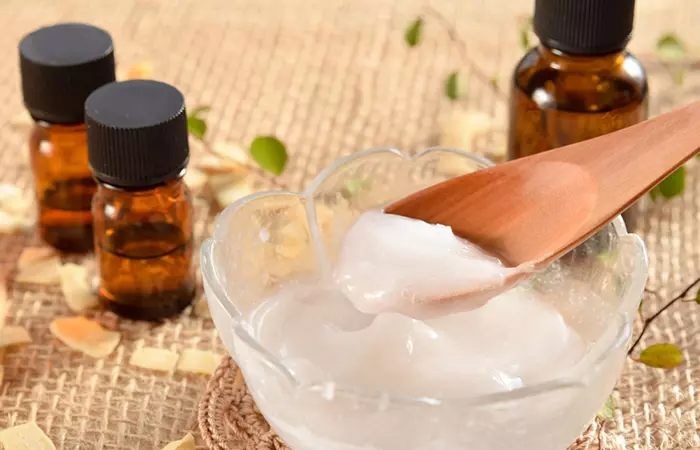
a. Peppermint Oil
You Will Need
- 6 drops of peppermint oil
- 1 teaspoon of coconut oil (or any other carrier oil)
What You Have To Do
- Add six drops of peppermint oil to a teaspoon of coconut oil.
- Mix well and apply it to the affected area.
- Leave it on for 30 minutes or overnight.
- Rinse it off.
How Often You Should Do This
You can do this 1 to 2 times daily.
Why This Works
Peppermint oil has a soothing and anti-inflammatory effect on inflamed and swollen skin due to the presence of menthol. It can also help alleviate symptoms of pain (4).
b. Lavender Oil
You Will Need
- 6 drops of lavender oil
- 1 teaspoon of coconut oil (or any other carrier oil)
What You Have To Do
- Add six drops of lavender oil to a teaspoon of any carrier oil.
- Mix well and apply it to the affected skin.
- Leave it on for 20 to 30 minutes or preferably overnight.
- Rinse it off.
How Often You Should Do This
You can do this 1 to 2 times daily.
Why This Works
With its anti-inflammatory and analgesici A class of drugs that help relieve pain from a wide variety of diseases, ranging from headaches to pain associated with scleroderma. effects, it is no surprise that lavender oil works wonderfully in treating the pain and inflammation that surface with scleroderma (5). It also relieves stress (6).
3. Gotu Kola
You Will Need
- ½ teaspoon of dried gotu kola
- 1 glass of hot water
What You Have To Do
- Add half a teaspoon of dried gotu kola to a cup of hot water.
- Steep for 5 to 7 minutes and strain.
- Drink the hot tea.
How Often You Should Do This
Drink Gotu kola tea 1 to 3 times daily.
Why This Works
Gotu kola (Centella asiatica) is a medicinal herb that is known to stabilize the connective tissues and promote the health of your blood vessels. It is also capable of alleviating symptoms of inflammation and stress (7).
4. Turmeric
You Will Need
- 1 teaspoon of turmeric powder
- 1 glass of hot milk or water
What You Have To Do
- Add a teaspoon of turmeric powder to a glass of hot milk or water.
- Mix well.
- Drink the solution.
- You can also apply a paste made of turmeric and water to the affected skin and leave it on for a few minutes.
How Often You Should Do This
You can do this once daily.
Why This Works
Turmeric is a rich source of curcumin. Supplementation with curcumin was observed to suppress the fibrotic process leading to the overproduction of collagen and the development of scleroderma (8), (9).
5. Onion
You Will Need
A small onion
What You Have To Do
- Cut a small onion into half.
- Rub half of the onion on the affected area gently.
- Allow the onion extract to work on the skin for 20 to 30 minutes.
- Rinse it off with water.
How Often You Should Do This
Do this 1 to 2 times daily.
Why This Works
Onions are rich in compounds like thiosulfinates and cepaene that exhibit anti-inflammatory activities. This helps in alleviating the symptoms of inflammation and swelling (10).
6. Lemon

You Will Need
- 1 lemon
- 1 teaspoon of honey
What You Have To Do
- Extract the juice from a lemon.
- Mix it with a teaspoon of honey.
- Apply the mixture to the affected skin.
- Leave it on for 20 minutes.
- Rinse it off with water.
How Often You Should Do This
You must do this once daily.
Why This Works
The topical application of lemon juice helps to soften the thickened skin and reduces the inflammation and swelling (11).
7. Gram Flour
You Will Need
- 2 teaspoons of gram flour
- Water (as required)
What You Have To Do
- Add a little water to two teaspoons of gram flour to form a paste.
- Apply the paste evenly to the affected area and leave it on for at least 20 minutes.
- Wash it off with water.
- You can also use this mixture as a natural replacement for soap.
How Often You Should Do This
Apply this to your skin at least once daily.
Why This Works
Gram flour can help smoothen rough and thickened skin. It also helps your skin regain its lost texture.
8. Fish Oil (Omega 3)
You Will Need
250-500 mg of fish oil or omega-3
What You Have To Do
- Consume 250 to 500 mg of fish oil daily.
- You can consume fatty fish like tuna, salmon, and mackerel.
- Alternatively, you can take fish oil supplements.
How Often You Should Do This
Incorporate fish oil into your daily diet.
Why This Works
Fish oil is a rich source of omega-3 fatty acids that help reduce inflammation and swelling in your body. Ingestion of fish oil can also prevent Raynaud’s disease, which is one of the characteristics of scleroderma (12).
9. Ginger
You Will Need
- 1-2 inches of ginger
- 1 cup of hot water
What You Have To Do
- Add 1 to 2 inches of ginger to a cup of hot water.
- Steep for 5 to 10 minutes and strain.
- Drink the hot tea.
How Often You Should Do This
You can drink ginger tea 2 to 3 times daily.
Why This Works
Ginger has strong antioxidant and anti-inflammatory properties that help inhibit pain-producing prostaglandins in your body, thus helping you manage the symptoms of scleroderma (13).
10. Cottage Cheese (Paneer)
You Will Need
2 servings of cottage cheese
What You Have To Do
- Add cottage cheese to salads or your favorite dishes.
How Often You Should Do This
You can consume cottage cheese once daily.
Why This Works
Cottage cheese is a rich source of sulfur and helps in the easier absorption of oil as well as other nutrients into your cells. This increases your energy levels and helps you deal with scleroderma better.
Other than these remedies, another natural way to manage the symptoms of scleroderma is to alter your diet. The following is a diet specially created for those struggling with scleroderma.
Scleroderma Diet

In general, those suffering from scleroderma are advised to eat small meals every 3 to 4 hours.
Consume more antioxidant and anti-inflammatory herbs and spices like the following.
Foods To Eat
- Basil
- Rosemary
- Oregano
- Cinnamon
- Paprika
- Ginger
- Cayenne
- Turmeric
You should try and restrict the foods listed below from your diet.
Foods To Avoid
- Free sugars
- Alcohol
- Caffeine
If you experience symptoms of GERD, avoid foods like:
- Citrus fruits
- Tomatoes
- Greasy foods
- Garlic
- Onions
- Spicy food
- Carbonated beverages
If you are looking for other ways to manage your symptoms, the following tips might help.
Tips To Manage Scleroderma

- Have smaller and frequent meals.
- Avoid eating a couple of hours before bedtime.
- Keep your skin well moisturized.
- Avoid injuring your fingers.
- Keep warm to avoid circulatory issues.
- Indulge in exercises that can alleviate stiffness.
- Quit smoking.
- Avoid using recreational drugs.
- Get enough rest and sleep.
- Practice yoga to manage your anxiety and stress levels.
- Avoid processed or junk foods.
- Avoid taking herbs like echinacea that are known to boost the activities of your immune system.
Scleroderma demands multiple changes in overall lifestyle, and it can get overwhelmingly challenging at times. Dolores Pfeuffer-Scherer, another lifestyle blogger with scleroderma shares, “I fight it with everything at my disposal, from prayer to exercise, to altering my lifestyle, whether it is eating, sleeping, or exercising to maintain my mobility and practicing mindfulness to make my days a little bit easier. Living with and managing a chronic illness takes a lot of time, energy, thought, planning, and more patience than I often have inside me (ii).”
Infographic: 5 Natural Ways To Manage Scleroderma
Scleroderma is a rare autoimmune disease that hardens and tightens your skin and mostly affects women. While medical options like physiotherapy and laser surgery are available, there are certain natural treatments that can help manage the symptoms of this disease. Scroll down and check out the infographic below to learn more. Illustration: StyleCraze Design Team
Scleroderma, a rare progressive autoimmune disorder, is characterized by the overproduction of collagen that leads to tightening and hardening of the skin and possible organ damage. It is a connective tissue disease and can be either localized or systematic and, based on that, may have varying symptoms. The most common signs of localized scleroderma, a comparatively milder form of the disorder, are dark or light-colored patches or bands of hardened skin. Systemic scleroderma presents symptoms such as swelling, red spots, thickened fingers, and stiffness. Vitamin D, essential oils, gram flour, fish oil, lemon, and turmeric are some of the natural treatments for this condition. In addition to these, medical treatment methods may be needed for some types of scleroderma. It is important to seek emotional and mental support whenever needed and follow the treatment methods prescribed by your healthcare provider.
Frequently Asked Questions
When to visit a doctor for scleroderma?
When it comes to serious health conditions like scleroderma, it is better to consult a doctor if you notice any of the symptoms – like swelling, thickening of the fingers, etc.
Is scleroderma life-threatening?
The symptoms of scleroderma usually vary from person to person. They can be mild or even life-threatening like pulmonary hypertension, esophageal dysfunction, or renal crisis.
How long can you live with scleroderma?
Women who are affected by scleroderma have a life expectancy that is 22.4 years shorter than the general population whereas, for men, it is 26 years. Around 24.2% of the population dies within 8 years of developing the disorder.
What is the prognosis for scleroderma?
Those with scleroderma have a lower life expectancy as compared to the general population.
Does walking help scleroderma?
Yes, walking is a common form of low-impact exercise recommended for scleroderma patients. Walking increases motility, relieves nausea, and promotes digestion (14). It is advised to gradually increase your walking distance as your condition allows.
Is heat good for scleroderma?
Yes, applying heat may alleviate the symptoms of Raynaud’s disease, one of the major symptoms of systemic scleroderma (15). However, further studies are warranted.
Is massage good for scleroderma?
Yes, studies indicate that massage therapy may improve thumb and hand motility in individuals with scleroderma (16).
Is stretching good for scleroderma?
Yes, stretching daily might help delay the loss of joint mobility and improve the flexibility of muscles in individuals with scleroderma (14). However, further studies are warranted.
Does scleroderma affect the brain?
Yes, there is a possibility that scleroderma may lead to the deposition of calcium in the blood vessels of the brain. This may lead to various neurological problems (17).
Illustration: Home Remedies For Scleroderma And Prevention Tips
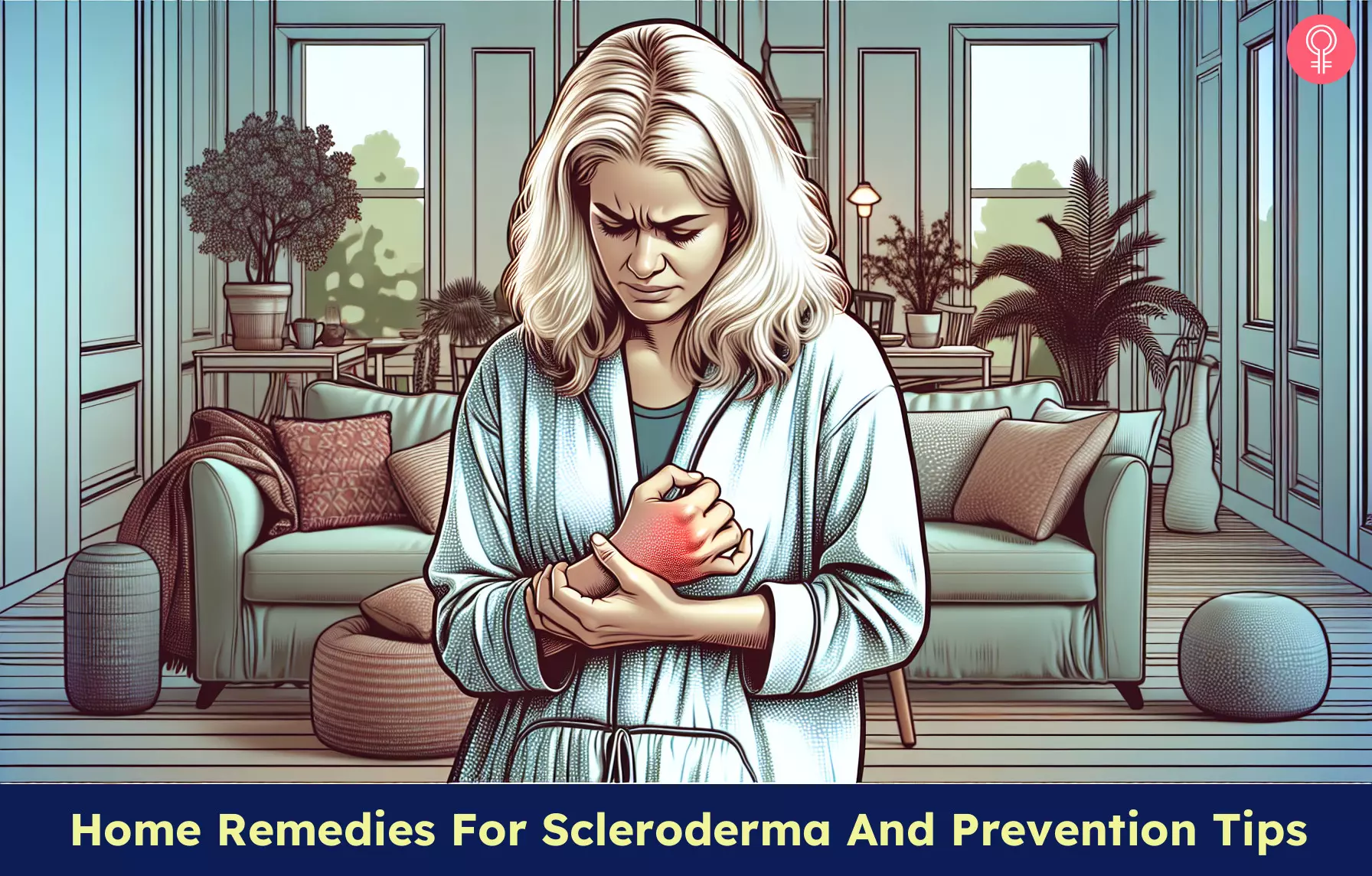
Image: Dall·E/StyleCraze Design Team
References
Articles on StyleCraze are backed by verified information from peer-reviewed and academic research papers, reputed organizations, research institutions, and medical associations to ensure accuracy and relevance. Read our editorial policy to learn more.
- Scleroderma.
https://www.ncbi.nlm.nih.gov/books/NBK537335/ - Low vitamin D status in systemic sclerosis and the impact on disease phenotype, European Journal of Rheumatology and Inflammation, US National Library of Medicine, National Institutes of Health.
https://www.ncbi.nlm.nih.gov/pmc/articles/PMC5042230/ - The anti-inflammatory activity of L-menthol compared to mint oil in human monocytes in vitro: a novel perspective for its therapeutic use in inflammatory diseases, European Journal of Medical Research, US National Library of Medicine, National Institutes of Health.
https://pubmed.ncbi.nlm.nih.gov/9889172/ - Antioxidant, analgesic and anti-inflammatory effects of lavender essential oil, Anais da Academia Brasileira de Ciência, US National Library of Medicine, National Institutes of Health.
https://pubmed.ncbi.nlm.nih.gov/26247152/ - Effect of lavender scent inhalation on prevention of stress, anxiety and depression in the postpartum period, Iranian Journal of Nursing and Midwifery Research, US National Library of Medicine, National Institutes of Health.
https://www.ncbi.nlm.nih.gov/pmc/articles/PMC4815377/ - Pharmacological Review on Centella asiatica: A Potential Herbal Cure-all, Indian Journal of Pharmaceutical Sciences, US National Library of Medicine, National Institutes of Health.
https://www.ncbi.nlm.nih.gov/pmc/articles/PMC3116297/ - Curcumin suppresses TGF-β signaling by inhibition of TGIF degradation in scleroderma fibroblasts, Biochemical and Biophysical Research Communications, US National Library of Medicine, National Institutes of Health.
https://www.ncbi.nlm.nih.gov/pmc/articles/PMC4417560/ - Beneficial Role of Curcumin in Skin Diseases, Advances in Experimental Medicine and Biology, US National Library of Medicine, National Institutes of Health.
https://pubmed.ncbi.nlm.nih.gov/17569219/ - Anti-inflammatory effects of onions: inhibition of chemotaxis of human polymorphonuclear leukocytes by thiosulfinates and cepaenes, International Archives of Allergy and Immunology, US National Library of Medicine, National Institutes of Health.
https://pubmed.ncbi.nlm.nih.gov/2246074/ - Anti-inflammatory effect of lemon mucilage: in vivo and in vitro studies, Immunopharmacology and Immunotoxicology, US National Library of Medicine, National Institutes of Health.
https://pubmed.ncbi.nlm.nih.gov/16435583/ - Fish-oil dietary supplementation in patients with Raynaud’s phenomenon: a double-blind, controlled, prospective study, American Journal of Medicine, US National Library of Medicine, National Institutes of Health.
https://pubmed.ncbi.nlm.nih.gov/2536517/ - Anti-Oxidative and Anti-Inflammatory Effects of Ginger in Health and Physical Activity: Review of Current Evidence, International Journal of Preventive Medicine, US National Library of Medicine, National Institutes of Health.
https://www.ncbi.nlm.nih.gov/pmc/articles/PMC3665023/ - Exercise as a multi-modal disease-modifying medicine in systemic sclerosis: An introduction by The Global Fellowship on Rehabilitation and Exercise in Systemic Sclerosis (G-FoRSS), Best practice & research. Clinical rheumatology, US National Library of Medicine, National Institutes of Health.
https://www.ncbi.nlm.nih.gov/pmc/articles/PMC8478716/ - Arm heating to relieve Raynaud’s phenomenon in systemic sclerosis: A single-arm multicentre prospective clinical trial, Modern Rheumatology, ResearchGate
https://www.researchgate.net/publication/363724956_Arm_heating_to_relieve_Raynaud%27s_phenomenon_in_systemic_sclerosis_A_single-arm_multicentre_prospective_clinical_trial - The short-term effect of gloving in combination with Traditional Thai Massage, heat, and stretching exercise to improve hand mobility in scleroderma patients,Journal of Ayurveda and integrative medicine, US National Library of Medicine, National Institutes of Health.
https://www.ncbi.nlm.nih.gov/pmc/articles/PMC4012363/ - Brain Involvement in Scleroderma, Stroke, AHA Journal.
https://www.ahajournals.org/doi/full/10.1161/01.str.29.3.719
Read full bio of Dr. Jyoti Gupta
Read full bio of Shaheen Naser
Read full bio of Anjali Sayee
Read full bio of Monomita Chakraborty






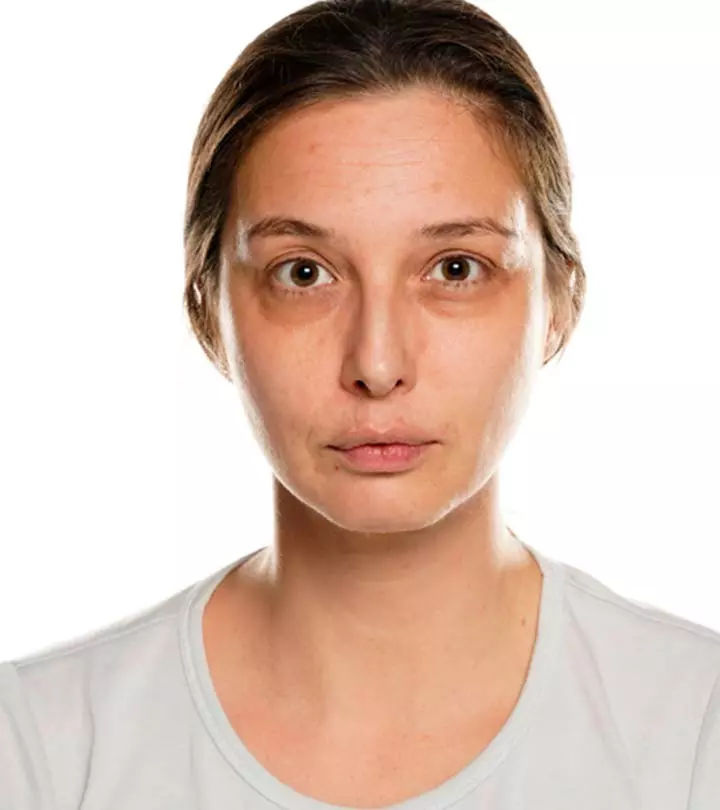
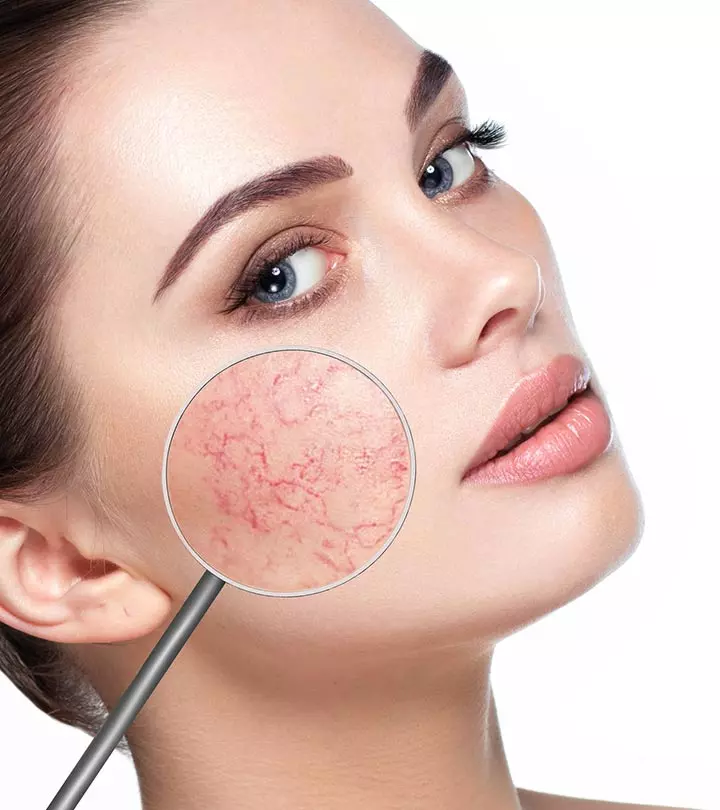
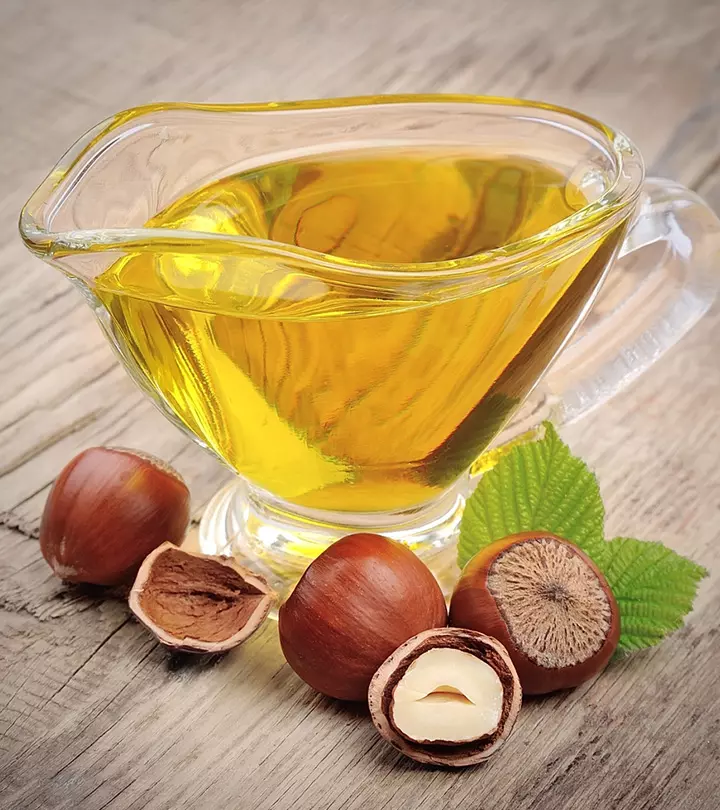
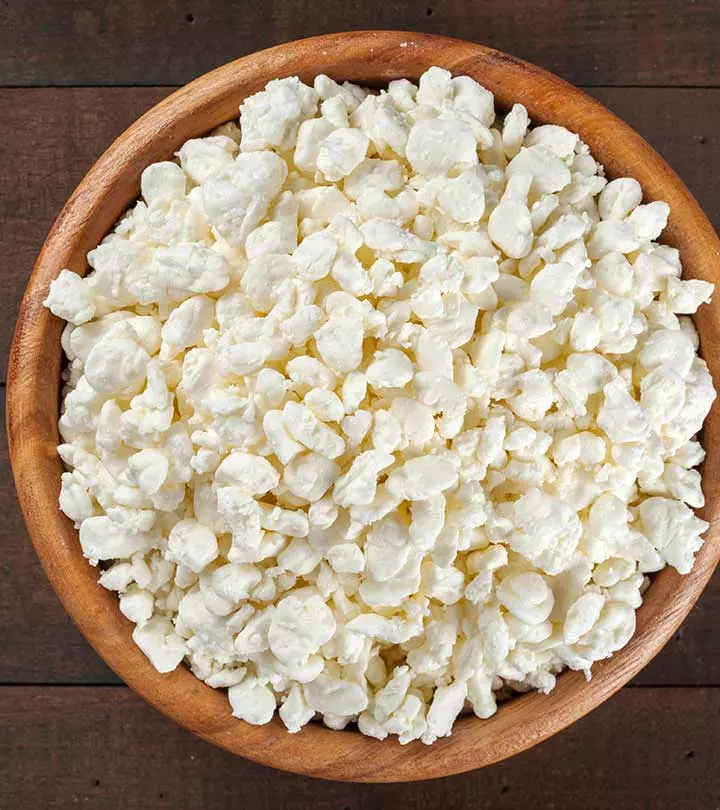
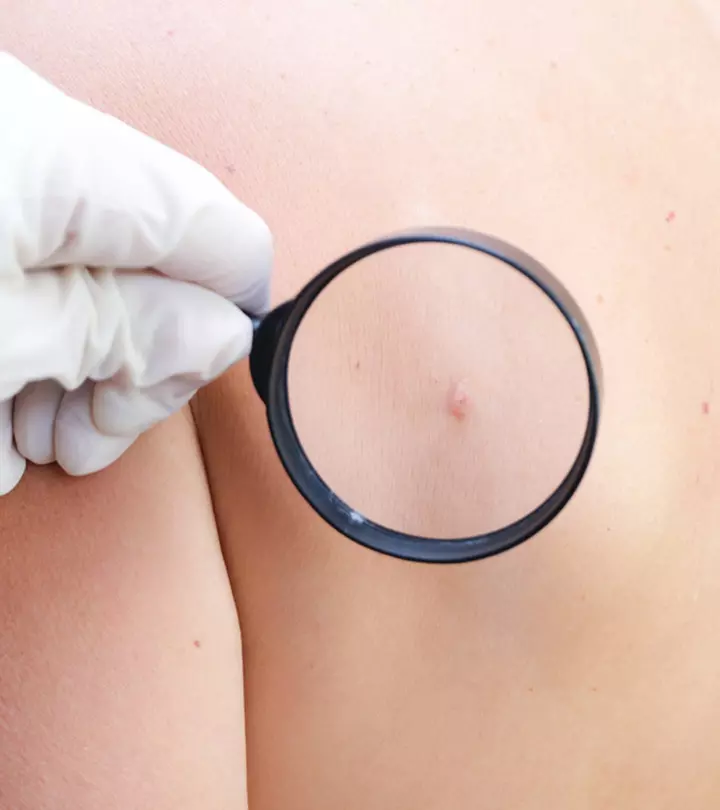
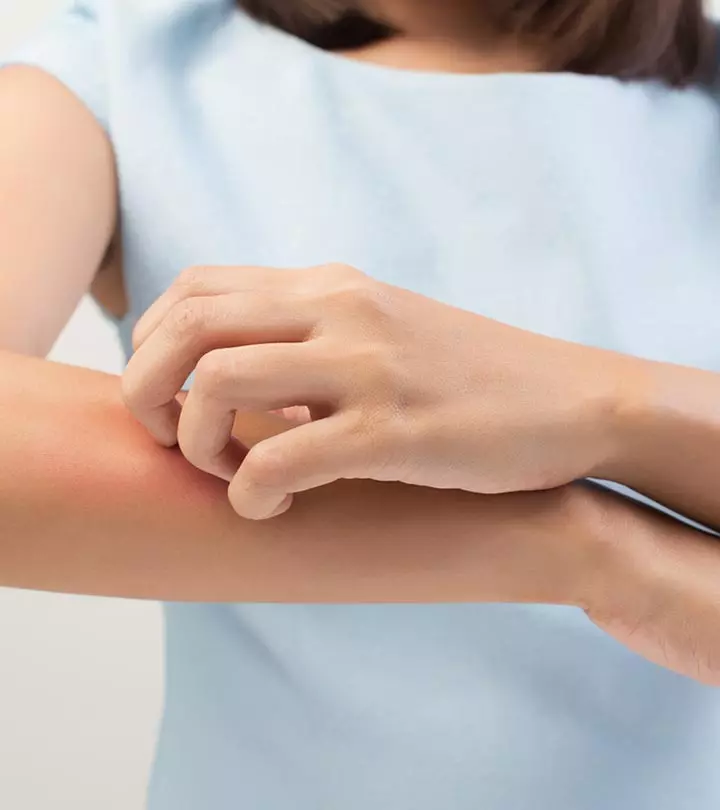
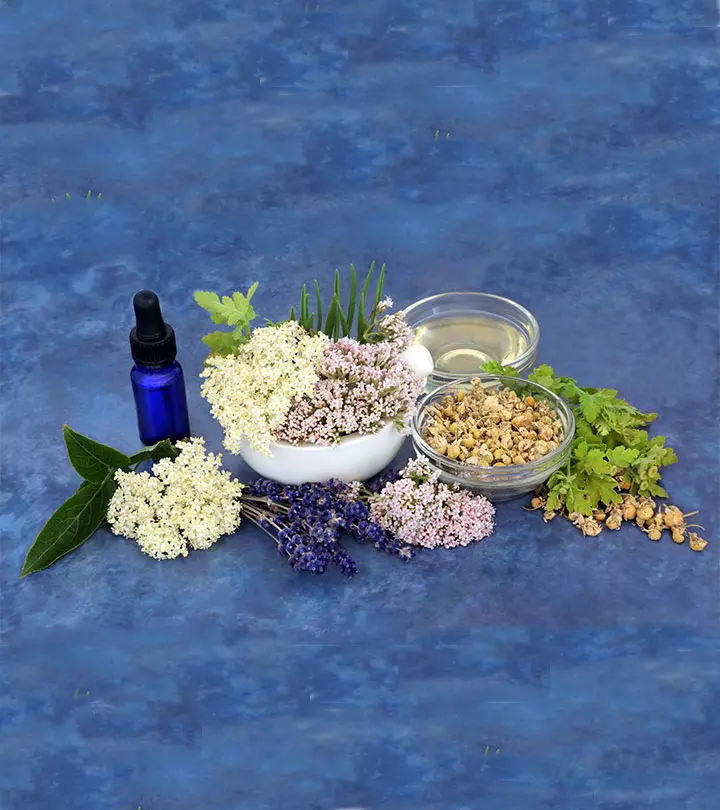
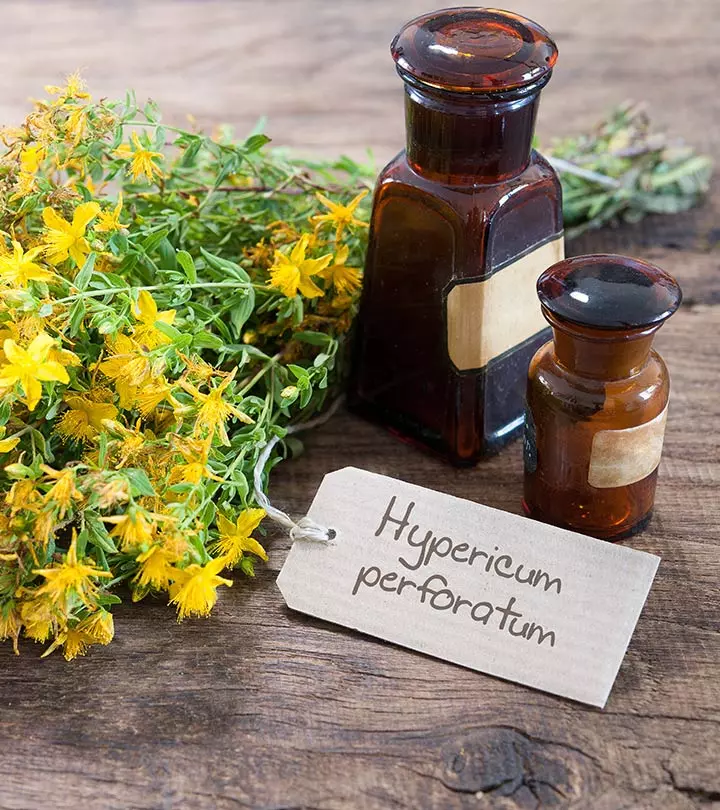
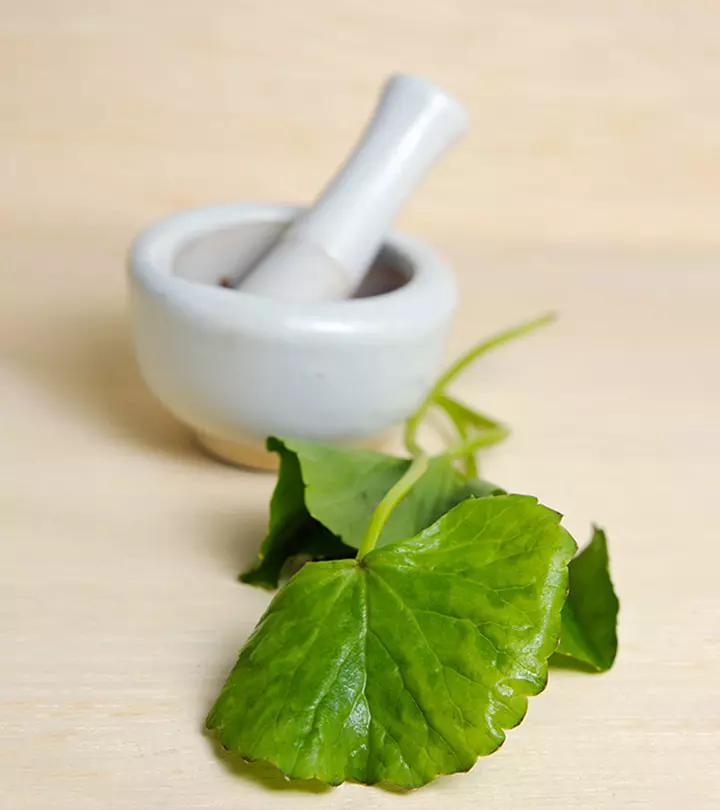
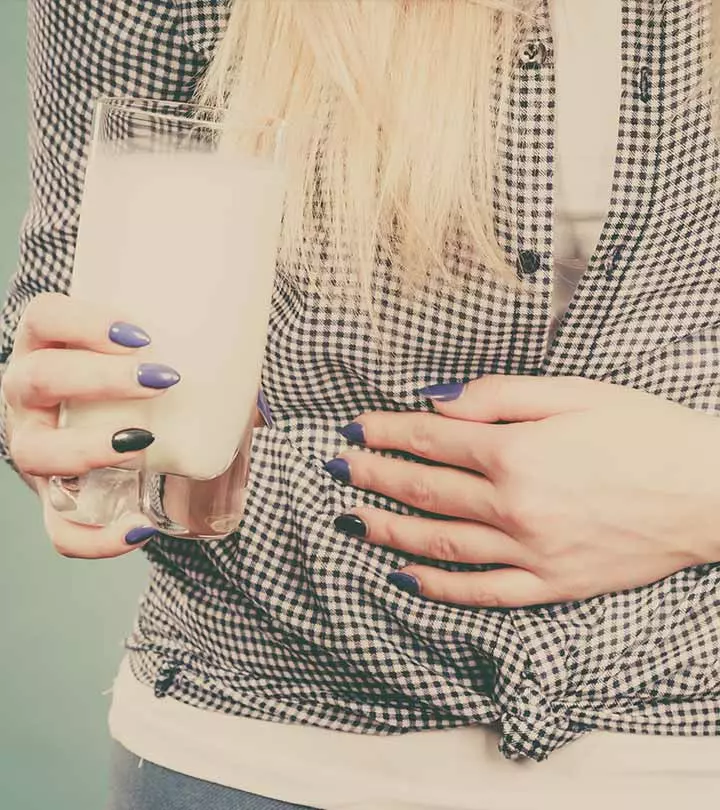



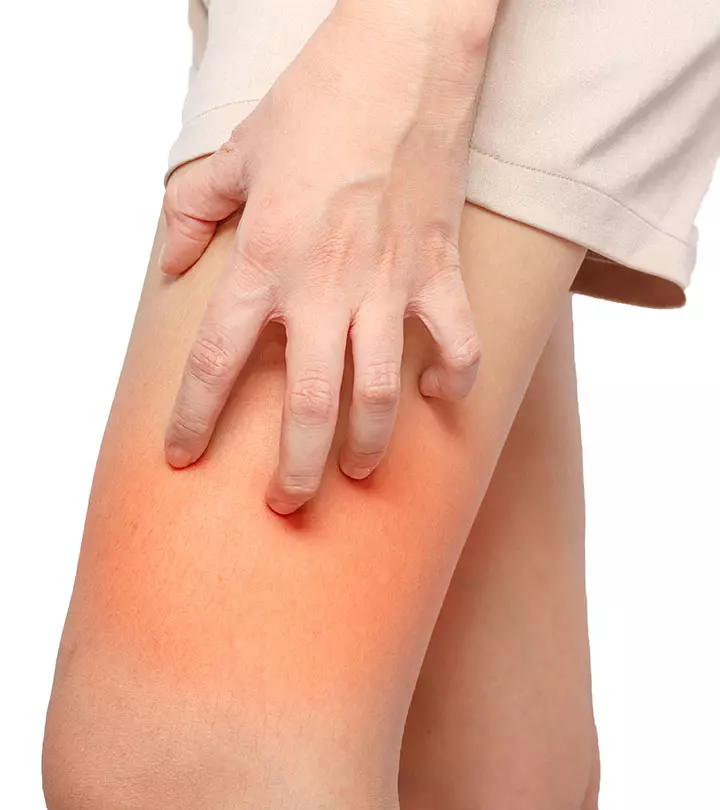


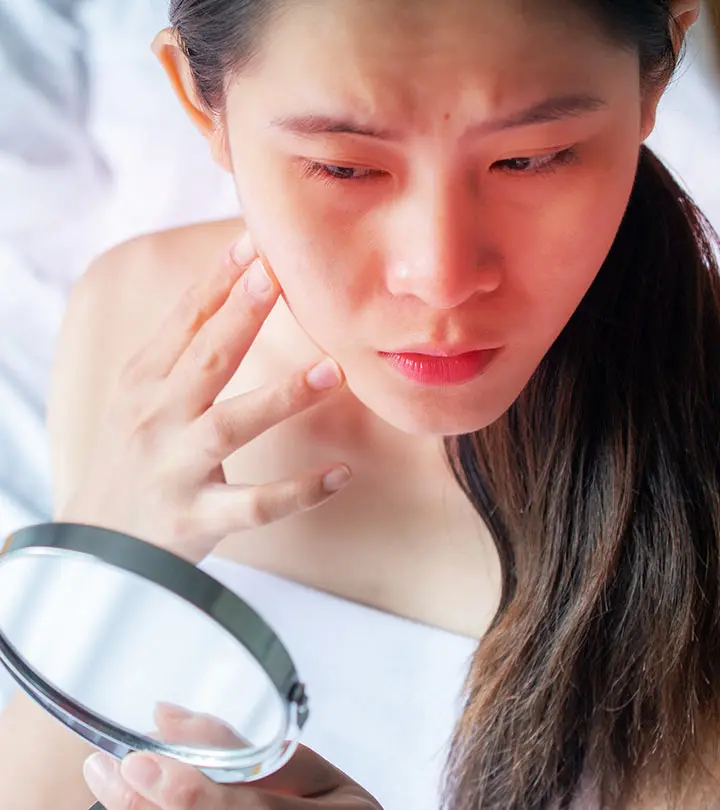


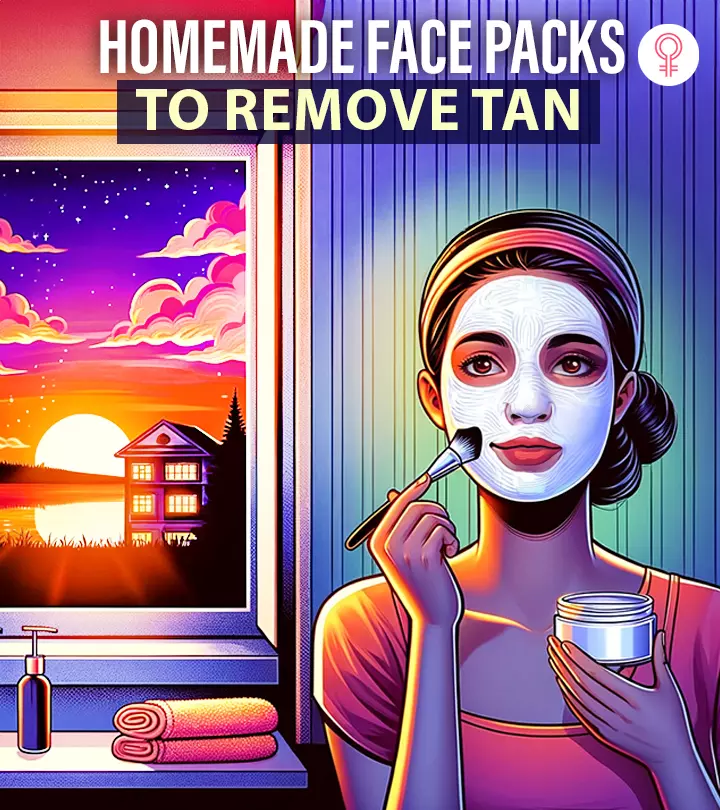

Community Experiences
Join the conversation and become a part of our empowering community! Share your stories, experiences, and insights to connect with other beauty, lifestyle, and health enthusiasts.